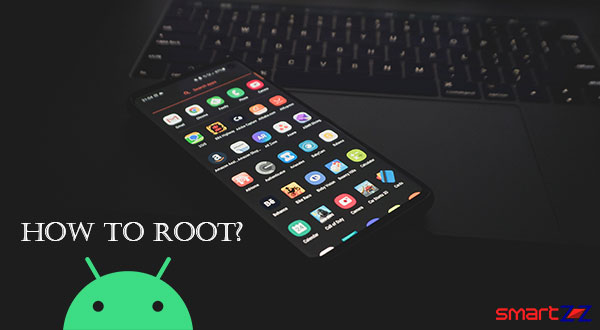Test the limits of your Android device. know how simple rooting is.

Owning an Android smartphone and wanting to use it to its fullest potential is an acceptable desire. Moreover, the biggest advantage of having an Android phone is the possibility of customization and flexibility. To access all phone settings and push the limits of a phone, rooting is an interesting option some take. This article is going to elaborate about rooting an Android phone and tell how rooting is done.
To an extent, rooting is a fairly complicated concept. But know that the process of rooting has become simpler than before. Rooting is very similar to what we call jailbreaking on iPhones. The basic idea is to get rid of all the restrictions on a phone and use it with all the software options. However, this comes with the downsides too. Rooting a phone can cause damages to the set and sometimes you might end up bricking it.
What is Rooting?
Rooting makes you a superuser of an Android phone. You will have all access to the phone’s commands, system files, and folders that are usually blocked. The freedom and additional control over the device will let you do stuff beyond what a normal user can do.
To put it more simply, when you root, you add a standard Linux function to gain special privileges and permissions. Once rooted, you will be the admin of the device and you can do the following.
- Install and run special applications.
- Bypass carrier installed software.
- Remove or disable bloatware applications.
- Unlock hidden features inside apps and launchers.
- Further customize the looks.
Key Note: No phone manufacturer encourages rooting and there is a reason for it. When you root your device there are chances for it to go unstable. Or sometimes the device can meet fatal damages due to improper rooting methods. So know that your actions are at your own risks and you are totally responsible.
Should you root or not?
Most people who root their devices will have bloatware removal as the main reason. Though you can disable bloatware in some cases, the only way to get rid of it is by rooting the device. Other reasons for rooting a device include installation of special tools, custom ROMs, and features that improve the phone’s performance. If you are able to relate yourself with the aforementioned reasons, you can go ahead and root your Android phone or tablet.
That said, rooting is not as necessary as it was earlier. All Android phones are fast and customization options on devices have increased. Your primary phones must be open for new updates and patches as they have to function well for the day-to-day stuff. Also, you don’t want to bar your phone from warranty and expose it to security risks. But if you have a special use-case scenario, rooting your secondary phone is advisable.
Now you must be clear about what rooting means and who would need it. If you have strongly decided to root your Android phone, use the step-by-step instructions given below.
How to Root your Android device.
The steps given below will apply for all Android phones irrespective of their brands. The directions are safe if you follow it correctly with proper precautions.
Step 1: Back up your phone.
The first and foremost action you take before rooting is backing up your phone. This is because there are chances for the process to go wrong and you don’t want to lose important things. Use third-party apps or Google’s services to backup your phone.
Step 2: Select an APK or Custom ROM
Now you need an Android Application Package (APK) or Custom ROM which is an alternate version of Android. There are a number of developers who create improved or redesigned versions of Android. You need an APK to distribute and install software on your device, so choose it carefully.
Most people who root their phone choose the Lineage OS as their custom ROM. Other ROM options include Paranoid Android and Android Open Kang Project (AKOP). Look into the options closely and find which would suit your device best.
Step 3: Unlock Bootloader
By unlocking the Bootloader you get control of applications that run when you boot up your phone.
Step 4: Install the selected APK or Custom ROM
Towelroot and Kingo are the most common APKs used to install software into devices. See which is compatible with your phone and use it. For alternative operating systems that have different interfaces and features shared with Android, you would need to install a custom ROM.
Step 5: Download Root Checker/ Root management.
If you choose APK over custom ROM, you might need a root checker app. This app will help you know that the rooting is successfully completed.
Installing a root management app is also important as it protects your rooted phone. For security purposes and safe access to private data you will definitely need a root management app.
By finishing this step you will become the administrator of your phone with complete control. You can now modify any settings and use apps specifically designed for rooted phones. The special applications are usually for ad-blocking, security, and backup. Customization of looks, colors, and button shapes is also possible depending on the OS version you choose.
KEYNOTE: Know that the above-given steps are more generic. This is because all Android phones have different manufacturers who don’t want you to root the device. It is impossible to cover all Android models hence we have given an overview of the rooting process.
For deeper knowledge about rooting specific Android phones, you can visit sites like XDA Developers Forum and the Android Forums.




More Stories
Best Smartphones Under $1000 to Buy in 2025 April : Flagship Phones
Doogee Blade GT – Nothing Successor! The Rugged Smartphone Review
Top 8 Best Smartphone Under $800 to Buy in 2025 April